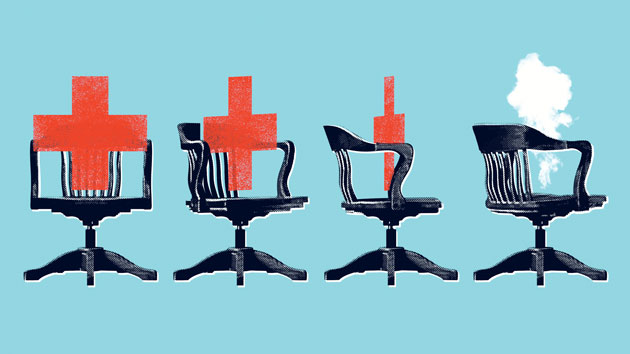
Photographee.eu/Shutterstock
The Supreme Court heard arguments Wednesday in a case that could result in more than 8 million people losing their health insurance. The next day, the Urban Institute released a new report showing again just what’s at stake in that case. Large swaths of the population have become so unhealthy that death rates are rising among a group long thought to be the healthiest American citizens: white women. And those numbers will only continue to skyrocket without a continued move toward universal health insurance.
For several decades, life expectancy among white women had been on the rise. Not anymore. According to Urban Institute data, between 1999 and 2013, white women’s death rates increased by nearly 12 percent, from 126 deaths per 100,000 women to 140 deaths. Such a wholesale and systematic reversal in life expectancy trends is extremely troubling, the researchers say—an “extreme indicator” that suggests large health declines in a broader population, and an indication that income inequality may be taking its toll on women’s health. They point to other countries that have seen similar reversals in longevity trends, and they aren’t pretty comparisons: Russia, with its epidemic of alcoholism, is among them, as is the teeming Industrial Revolution-era London that Charles Dickens chronicled.
The Urban Institute researchers attribute the rise in US deaths among white women to a number of factors. The largest is the sharp spike in overdose deaths from prescription painkillers like Oxycontin, which jumped from 3.3 to 15.9 deaths per 100,000 between 1999 and 2011—an increase of a factor of five. But even without the spike in drug overdoses, white women’s death rates are rising. As deaths from car accidents, breast cancer, and murder have declined, women have died in higher numbers from more pedestrian health care problems, such as the flu and respiratory infections, as well as chronic illnesses linked to obesity, such as diabetes, kidney disease (a complication of high blood pressure), and heart disease.

The data does show some improvements, but namely among African American women, who have long had sky-high death rates. Their death rates, particularly from cardiovascular disease, have gone down significantly. Overall, death rates for black women fell from 262 to 201 per 100,000, a nearly 25 percent decrease. Those numbers are better, but still far higher than the rates for either white or Hispanic women.
The increase in death rates among white woman suggests that the economic factors that have long affected their black counterparts are now hitting white communities hard. And there’s no easy fix. The Urban Institute authors say that focusing on individual behaviors, like trying to get people to lose weight, are unlikely to succeed without a broader focus on improving the systemic factors like poverty and isolation that lead to unhealthy behavior like smoking and poor diets.
One factor that seems likely to help in this regard is providing everyone with health insurance, as with the Affordable Care Act. The Urban Institute data doesn’t encompass 2014, the first year that the ACA fully took effect. It might be interesting to see how the large drop in the uninsured rate affects mortality going forward, particularly in a state like Kentucky, which has seen some of the largest spikes in deaths among white women but which also has worked hard to implement Obamacare. In the process, its uninsured rate dropped from 20.4 percent to 9.8 percent in just one year.
Unfortunately, the country might not get that chance if the Supreme Court rules in favor of the plaintiffs in King v. Burwell and ends insurance subsidies for millions of Americans. Incidentally, the people most likely to suffer from an adverse court ruling also live in the same places where white women’s mortality rates are going up—all of West Virginia, large parts of Tennessee, and the mostly Southern states that have both refused to expand Medicaid coverage and to set up state exchanges where residents could purchase subsidized premiums. If the Supreme Court makes Obamacare goes away, more women of all colors will continue to die before their time.














